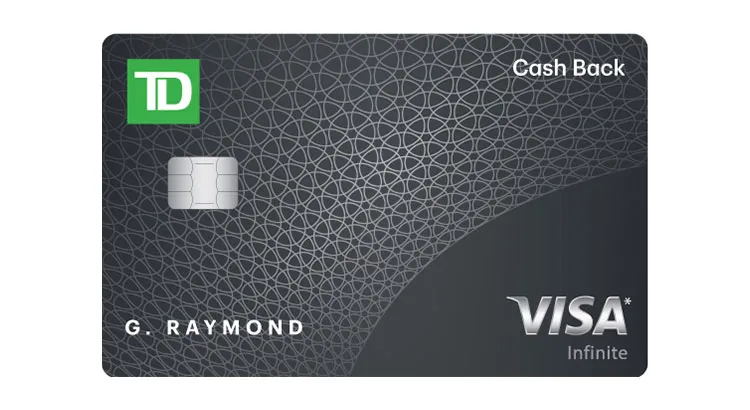How to avoid hidden fees on international credit cards

Understanding Hidden Fees
When traveling abroad, the allure of international credit cards often draws Canadians in with promises of rewards, benefits, and convenience. However, buried within these appealing offers are hidden fees that can quickly transform a favorable arrangement into an unexpected financial burden. Many travelers only realize the existence of these charges after returning home, often regretting decisions made in haste. By becoming aware of these potential costs and learning how to navigate them, travelers can protect their finances and ensure a more enjoyable trip.
Common Hidden Fees to Watch For
- Foreign Transaction Fees: Many credit cards charge foreign transaction fees ranging from 1% to 3% on each purchase made outside of Canada. For example, if you purchase a souvenir worth $100 in France, you might end up paying an additional $3 to $5 just due to these fees. Over a week-long trip, these charges can accumulate significantly.
- Dynamic Currency Conversion: This service may allow you to see prices in Canadian dollars, but it often comes with unfavorable exchange rates. For instance, if you buy a meal that costs €50, you might think you’re paying approximately $75 CAD with conversion. However, due to hidden charges in this service, you could instead be paying $80 CAD or more.
- ATM Withdrawal Fees: When withdrawing cash from foreign ATMs, be aware that both your home bank and the ATM operator might impose fees. Imagine withdrawing the equivalent of $200 CAD—it could potentially cost you an extra $10 to $20 in combined fees, making your cash withdrawal more expensive.
Understanding these fees is crucial for maintaining control over travel expenses. It’s not just about choosing a credit card; it’s also about being educated enough to make informed spending choices while you’re abroad.
Proactive Strategies
To avoid falling victim to hidden fees, there are proactive strategies you can follow:
- Research Credit Cards: Before your trip, take the time to look for credit cards that offer benefits such as waived foreign transaction fees. Some Canadian banks and credit unions offer cards tailored for international travel, allowing you to save money while enjoying your journey.
- Use Local Currency: When given the choice, always opt to pay in the local currency. Not only does this prevent dynamic currency conversion fees, but you may also find better exchange rates than those offered by your credit card.
- Check ATM Partnerships: Certain banks have partnerships with international ATM networks. By finding and using ATMs that belong to your bank’s global network, you can minimize fees associated with cash withdrawals.
As you prepare for your next international adventure, keeping these insights in mind will ensure more of your hard-earned money stays in your pocket, allowing you to focus on making incredible memories rather than worrying about unexpected expenses.
Navigating the Landscape of Hidden Fees
Understanding hidden fees is key to making the most of international credit card usage. As Canadians travel abroad, they often underestimate the cumulative impact of these charges on their overall expenses. By recognizing the most common hidden fees associated with international credit cards, travelers can better equip themselves to minimize their financial impact.
Awareness of Common Fees
By keeping an eye on specific fees, you can prepare and avoid unnecessary charges. Here are some of the most common hidden fees associated with international credit cards:
- Foreign Transaction Fees: Many credit cards levy a foreign transaction fee, typically between 1% and 3% on any purchases made outside Canada. This means for every $100 spent abroad, you may wind up paying an additional fee of $1 to $3. If you enjoy a few meals, souvenirs, or activities abroad, these costs can add up quickly and put a strain on your travel budget.
- Dynamic Currency Conversion Charges: When you’re at a foreign shop or restaurant and are given the option to pay in Canadian dollars, it may seem convenient. However, this service can lead to dynamic currency conversion charges that are typically unfavorable compared to standard exchange rates. For instance, purchasing a €50 meal might appear to be $75 CAD initially, but with the hidden charges included, it can balloon to $80 CAD or more.
- ATM Withdrawal Fees: Withdrawing cash can be another hidden pitfall. Both your Canadian bank and the foreign ATM could tack on withdrawal fees. If you pull out $200 CAD while abroad, you might be facing an extra $10 to $20 in combined charges. This can surprise many travelers who prefer cash transactions.
In light of these potential pitfalls, becoming proactive about identifying and understanding these fees can play a significant role in keeping your finances in check while traveling.
Steps to Mitigate Hidden Fees
Now that you know what to look out for, there are practical steps you can take to minimize exposure to these hidden charges:
- Choose the Right Credit Card: Before heading out on your trip, research credit card options that don’t charge foreign transaction fees. Certain Canadian banks or credit unions offer travel-specific cards aimed at saving you money on international spending.
- Always Pay in Local Currency: Whenever possible, opt to pay in the local currency instead of Canadian dollars. Doing so helps you avoid the dynamic currency conversion charges and may even afford you a more favorable exchange rate than your credit card offers.
- Utilize Partner ATMs: Some banks have worldwide ATM partnerships that can minimize withdrawal fees. Familiarize yourself with these networks ahead of your trip, and aim to use ATMs associated with your bank to keep costs down.
Armed with this knowledge, you can make informed decisions that help you save more money, allowing you to enjoy your adventure to the fullest.
Maximizing Your Savings While Traveling
Financial literacy is crucial when it comes to avoiding hidden fees during international travel. As Canadian travelers venture abroad, they often encounter various charges that lead to unexpected costs. By understanding the nuances of international credit card transactions, you can enhance your travel experience while keeping your finances intact.
Understanding Currency Exchange Rates
The currency exchange rate that applies to your credit card transactions is essential in managing your travel expenses. Different banks and credit card issuers set their exchange rates, which can lead to discrepancies. Checking the daily conversion rate on a reliable source can provide you a benchmark when reviewing your credit card statement later. For instance, if your bank’s rate significantly deviates from the market rate, it could signal that you’re being overcharged.
Additionally, some credit cards offer no foreign transaction fees alongside competitive exchange rates, which makes them excellent for travel. Research cards that feature favorable terms for international transactions, as they will ultimately save you money when spending abroad.
Planning Ahead for Payment Methods
While international credit cards offer convenience, having a backup plan can mitigate risk. Not all places accept credit cards, especially in rural areas or smaller markets. Consider carrying a small amount of local currency for incidental expenses such as street food or public transport. To avoid excessive ATM fees, plan your withdrawals to cover a few days’ worth of spending. This minimizes the frequency of withdrawals and reduces cumulative fees.
When you do need to withdraw cash, opt for a credit card that allows you to withdraw cash at a lower fee or provides international ATMs that align with your bank. Prioritize cash withdrawals inside bank-affiliated ATMs, as they typically feature lower fees than independent machines.
Discount Programs and Promotions
Many credit cards come with travel perks such as discounts at partner merchants, which can also help curb costs abroad. Keep an eye out for credit cards that offer rewards through travel partners. For example, some cards provide cashback, travel points, or discounts at hotels and restaurants worldwide. By strategically using these features, you can enhance your travel experience while minimizing your spending.
Moreover, don’t forget to read the fine print on your credit card’s terms and conditions. This will help you identify any special promotional periods where fees are waived or reduced. Regularly monitoring your expenses through your credit card app can also alert you to any inconsistency in charges, helping to keep unnecessary fees at bay.
Utilizing Financial Tools and Resources
Take advantage of technology to improve your financial literacy and awareness while traveling. Numerous smartphone apps can help you manage international transactions, providing notifications of any fees incurred on your travel spend. Tracking your expenses in real-time allows for better budgeting and ensures you stay within your limits.
Additionally, using travel planning websites can help you research your destination’s prevalent financial practices. This knowledge can empower you to make informed decisions, whether it’s selecting the best restaurants or finding local shops that offer favorable payment terms.
By employing these strategies and actively managing your transactions, you’ll be better equipped to navigate the complexities of using credit cards internationally, ultimately enhancing your travel enjoyment without the burden of hidden fees.
Conclusion
Navigating the world of international credit card transactions can be challenging, especially with the prevalence of hidden fees. However, by implementing a few strategic measures, Canadian travelers can significantly reduce their chances of incurring unexpected costs. First and foremost, it is essential to research and select a credit card that offers favorable terms for international use, including no foreign transaction fees and competitive exchange rates. This can make a substantial difference in your overall expenses while traveling.
In addition, having a well-thought-out payment strategy, such as carrying some local cash, can minimize the risk associated with relying solely on your credit card, particularly in places where card acceptance may be limited. It’s also wise to plan your ATM withdrawals carefully to avoid frequent fees and to use bank-affiliated ATMs wherever possible.
Furthermore, taking advantage of the benefits offered by your card, such as discounts and promotional offers, can add extra value to your travel experience. Being informed through apps and technology can aid in monitoring your spending and keeping track of fees in real-time, thus allowing for more effective budgeting and peace of mind during your journey.
In conclusion, by arming yourself with knowledge and being proactive in managing your credit card use abroad, you can enjoy a more financially savvy travel experience, ensuring that you make the most of your adventures without the stress of hidden fees weighing you down.

Linda Carter is a writer and financial consultant specializing in economics, personal finance, and investment strategies. With years of experience helping individuals and businesses make complex financial decisions, Linda provides practical analyses and guidance on the World Information Now platform. Her goal is to empower readers with the knowledge needed to achieve financial success.






